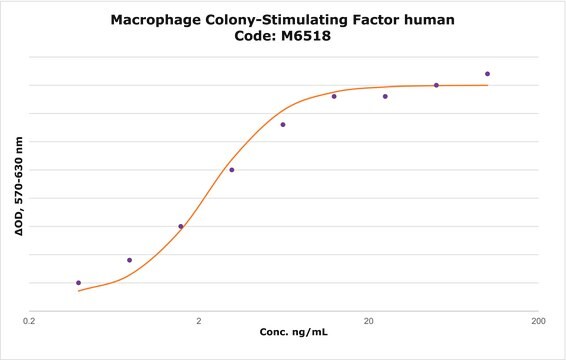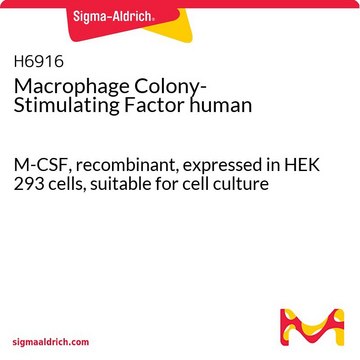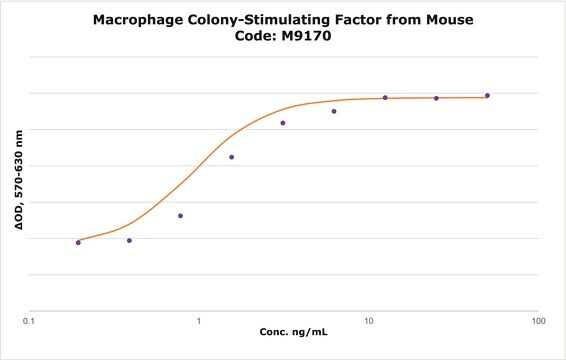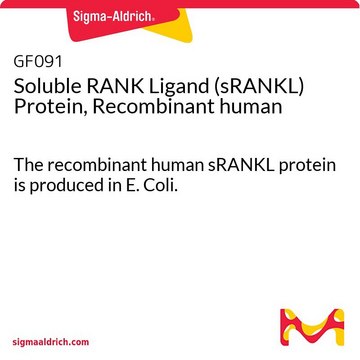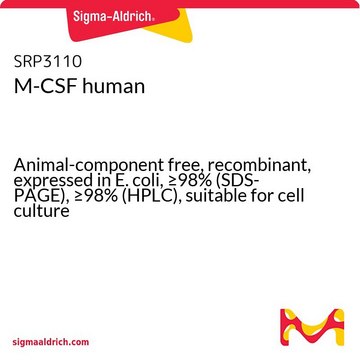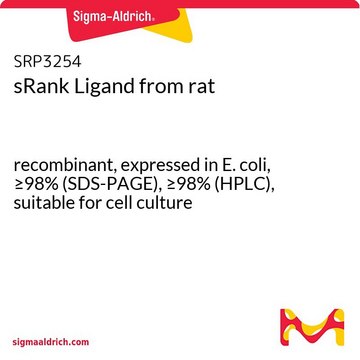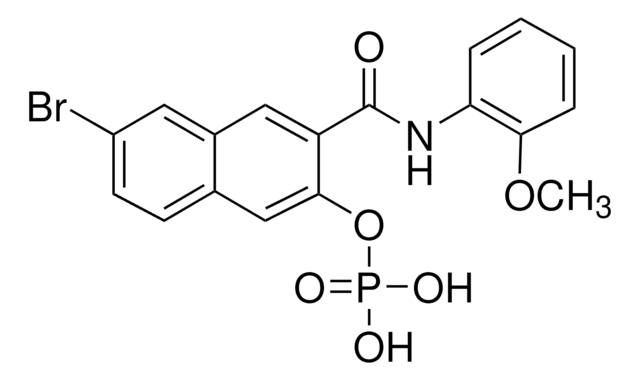R0525
RANK Ligand from mouse
≥98% (SDS-PAGE), recombinant, expressed in E. coli, lyophilized powder, suitable for cell culture
Sinônimo(s):
Osteoclast differentiation factor (ODF), Osteoprotegerin ligand (OPGL), Receptor activator of NF-κB Ligand (RANKL), TNF-related activation−induced cytokines (TRANCE)
About This Item
Produtos recomendados
fonte biológica
mouse
Nível de qualidade
recombinante
expressed in E. coli
Ensaio
≥98% (SDS-PAGE)
Formulário
lyophilized powder
potência
10.0-25.0 ng/mL ED50
embalagem
pkg of 10 μg
condição de armazenamento
avoid repeated freeze/thaw cycles
técnica(s)
cell culture | mammalian: suitable
Impurezas
<0.1 ng/mg
<1 EU/μg
cor
white
nº de adesão UniProt
temperatura de armazenamento
−20°C
Informações sobre genes
mouse ... Tnfsf11(21943)
Descrição geral
Aplicação
Ações bioquímicas/fisiológicas
forma física
Nota de análise
Código de classe de armazenamento
11 - Combustible Solids
Classe de risco de água (WGK)
WGK 2
Ponto de fulgor (°F)
Not applicable
Ponto de fulgor (°C)
Not applicable
Equipamento de proteção individual
Eyeshields, Gloves, type N95 (US)
Escolha uma das versões mais recentes:
Já possui este produto?
Encontre a documentação dos produtos que você adquiriu recentemente na biblioteca de documentos.
Os clientes também visualizaram
Nossa equipe de cientistas tem experiência em todas as áreas de pesquisa, incluindo Life Sciences, ciência de materiais, síntese química, cromatografia, química analítica e muitas outras.
Entre em contato com a assistência técnica

